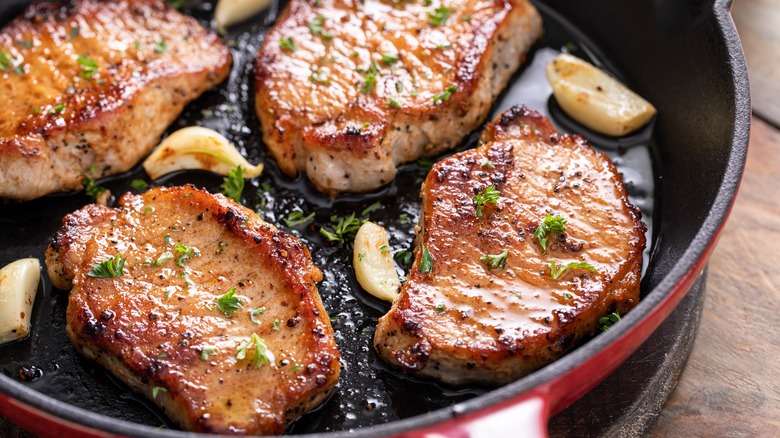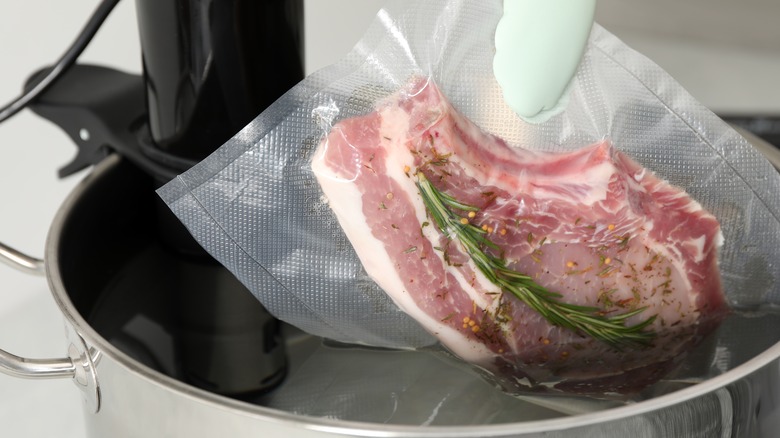How To Cook A Perfectly Juicy Pork Chop On The Stove
When you eat a pork chop, you shouldn't need a razor-sharp knife to cut through it and a tall glass of water to choke down each bite. But more times than not, pan-cooked pork chops end up impossibly tough and disappointingly dry. That is why Food Republic asked Rich Parente, chef and owner of Clocktower Grill in Brewster, New York, about the best ways to cook a pork chop on the stove so that it stays nice and juicy.
For Parente, the sous vide method is ideal for both bone-in and boneless pork chops. To cook this way, the raw cut of meat is vacuum-sealed in plastic and then cooked gently in "a water bath at a consistent, low temperature," Parente explained. He recommended about a four-hour cook at 135 degrees Fahrenheit, depending on the size and thickness of your cut.
While it does take a little advanced planning to cook a chop for that amount of time, the process is totally hands-off. A sous vide machine attaches to the side of a pot, heats the water via a metal coil, and keeps the temperature constant, so you can set it and forget it. After the chop has cooked through, finish it with a quick sear on very high heat for caramelization — this is a similar concept to the reverse-sear method. You are able to get the crisp, charred texture of a seared chop while ensuring that the inside stays juicy and tender because of the low and slow cook.
More ways to make juicy pork chops on the stove
Rich Parente shared another method with Food Republic for cooking juicy pork chops even without a sous vide machine. "You can sear it on each side over high heat on the stove, and then lower the heat and cover it with a lid to cook it all the way through," he explained. He cautioned to be aware of overcooking, which is the enemy of juiciness, saying to "Watch the temperature" as you go.
This is crucial because the leanness of pork chops makes them susceptible to drying out. There is not a lot of fat to counterbalance any toughness if they are overcooked. As such, utilizing an instant-read meat thermometer is super helpful here. According to the USDA, pork must reach an internal temperature of 145 degrees Fahrenheit to be safe to consume. However, even after you take it out of the pan, the chop will keep cooking from its own residual heat. That means you should take it out of the pan when it is between 135 and 140 degrees Fahrenheit. After resting (which is the most crucial step for perfect steak and chops), check again to make sure it reached a safe temperature threshold.
To serve, slice your chop against the grain for maximum tenderness, and pour any juices right back on top. Then, finish it off with a boozy compound butter, or deglaze the pan with leftover beer for a hoppy pan sauce — your pork chop will thank you!


